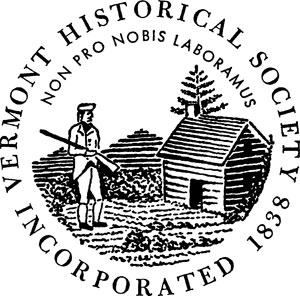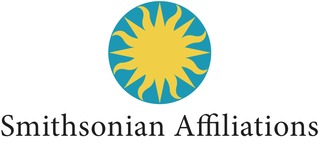
Industrial archaeology (IA) is the systematic study of material evidence associated with the industrial past. This evidence, collectively referred to as industrial heritage, includes buildings, machinery, artifacts, sites, infrastructure, documents and other items associated with the production, manufacture, extraction, transport or construction of a product or range of products. The field of industrial archaeology incorporates a range of disciplines including archaeology, architecture, construction, engineering, historic preservation, museology, technology, urban planning and other specialties, in order to piece together the history of past industrial activities. The scientific interpretation of material evidence is often necessary, as the written record of many industrial techniques is often incomplete or nonexistent. Industrial archaeology includes both the examination of standing structures and sites that must be studied by an excavation.

The American Planning Association (APA) is a professional organization representing the field of urban planning in the United States. The APA was formed in 1978, when two separate professional planning organizations, the American Institute of Planners and the American Society of Planning Officials, were merged into a single organization. The American Institute of Certified Planners is now the organization's professional branch.

Amateur geology or rock collecting is the non-professional study and hobby of collecting rocks and minerals or fossil specimens from the natural environment. In Australia, New Zealand and Cornwall, the activities of amateur geologists are called fossicking. The first amateur geologists were prospectors looking for valuable minerals and gemstones for commercial purposes. Eventually, however, more people have been drawn to amateur geology for recreational purposes, mainly for the beauty that rocks and minerals provide.
The American Association of Petroleum Geologists (AAPG) is one of the world's largest professional geological societies with more than 40,000 members across 129 countries as of 2021. The AAPG works to "advance the science of geology, especially as it relates to petroleum, natural gas, other subsurface fluids, and mineral resources; to promote the technology of exploring for, finding, and producing these materials in an economically and environmentally sound manner; and to advance the professional well-being of its members." The AAPG was founded in 1917 and is headquartered in Tulsa, Oklahoma; currently almost one-third of its members live outside the United States.

The Society of Economic Geologists (SEG) is a scientific organization that promotes the study of geology as it relates to mining, mineral exploration, mineral resource classification and mineral extraction. The society's Publication Board publishes the scientific journal Economic Geology. The society serves 7,000+ members worldwide who are committed to advancing the science and the discovery of mineral resources through research, publications, courses, and field trips.
The Society of American Archivists is the oldest and largest archivist association in North America, serving the educational and informational needs of more than 5,000 individual archivist and institutional members. Established in 1936, the organization serves upwards of 6,200 individual and member institutions.

The Mineralogical Society of America (MSA) is a scientific membership organization. MSA was founded in 1919 for the advancement of mineralogy, crystallography, geochemistry, and petrology, and promotion of their uses in other sciences, industry, and the arts. It encourages fundamental research about natural materials; supports the teaching of mineralogical concepts and procedures to students of mineralogy and related arts and sciences; and attempts to raise the scientific literacy of society with respect to issues involving mineralogy. The Society encourages the general preservation of mineral collections, displays, mineral localities, type minerals and scientific data. MSA represents the United States with regard to the science of mineralogy in any international context. The Society was incorporated in 1937 and approved as a nonprofit organization in 1959.
The Association for Women Geoscientists is a professional organization which promotes the professional development of its members, provides geoscience outreach to girls, and encourages women to become geoscientists. Membership is open to all who support AWG's goals. Members include professional women and men from industry, government, museums and academia, students from a cross-section of colleges and universities, retirees, and others interested in supporting the society's goals.

Waldemar Lindgren was a Swedish-American geologist. Lindgren was one of the founders of modern economic geology.
The Geological Association of Canada (GAC) is a learned society that promotes and develops the geological sciences in Canada. The organization holds conferences, meetings and exhibitions for the discussion of geological problems and the exchange of views in matters related to geology. It publishes various journals and collections of learned papers dealing with geology.

Canada Wide Media Limited is an independently owned publishing company in Western Canada, based in Burnaby, British Columbia.

The Vermont Historical Society (VHS) was founded in 1838 to preserve and record the cultural history of the US state of Vermont. Headquartered in the old Spaulding School Building in Barre, the Vermont History Center is home to the Vermont Historical Society's administrative offices, the Leahy Library and a small book shop. In Montpelier the Society operates the Vermont History Museum in the Pavilion building, just east of the Vermont State House.
The American Society for Bone and Mineral Research (ASBMR) is a professional, scientific and medical society established in 1977 to promote excellence in bone and mineral research and to facilitate the translation of that research into clinical practice. The ASBMR has a membership of nearly 4,000 physicians, basic research scientists, and clinical investigators from around the world.
The Delaware Mineralogical Society, Inc., also known as DMS, is a U. S. registered tax-deductible 503 (c) (3) non-profit organization located in Wilmington, Delaware, USA. Its primary purpose is to promote education in the earth sciences. DMS was instrumental in the recommendation of Delaware's official mineral Sillimanite to the Delaware State Legislature in 1977.

The State Historical Society of Iowa (SHSI), a division of the Iowa Department of Cultural Affairs, serves as the official historical repository for the State of Iowa and also provides grants, public education, and outreach about Iowa history and archaeology. The SHSI maintains a museum, library, archives, and research center in Des Moines and a research library in Iowa City, as well as several historic sites in Iowa. It was founded in 1857 in Iowa City, where it was first affiliated with the University of Iowa. As the organization grew in size and collections, it became a separate state agency headquartered near the Iowa Capitol in Des Moines.

The Willa Cather Foundation is an American not-for-profit organization, headquartered in Red Cloud, Nebraska, dedicated to preserving the archives and settings associated with Willa Cather (1873–1947), a Pulitzer Prize-winning author, and promoting the appreciation of her work. Established in 1955, the Foundation is a 501(c)(3) not-for-profit organization that promotes Willa Cather’s legacy through education, preservation, and the arts. Programs and services include regular guided historic site tours, conservation of the 612 acre Willa Cather Memorial Prairie, and organization of year-round cultural programs and exhibits at the restored Red Cloud Opera House.

The Natural Science Collections Alliance is a Washington, D.C. based non-profit organization supporting natural science museums, botanical gardens, universities and other institutions that maintain natural science collections.

Smithsonian Affiliations is a division of the Smithsonian Institution that establishes long-term partnerships with non-Smithsonian museums and educational and cultural organizations, in order to share collections, exhibitions and educational strategies and conduct joint research.
Catherine Margaret Corrigan, often known as Cari Corrigan, is an American scientist best known as a curator of the meteorite collection at the Smithsonian Institution. She is a scientist in the Department of Mineral Science at the National Museum of Natural History.











